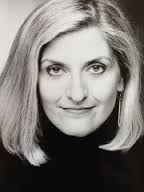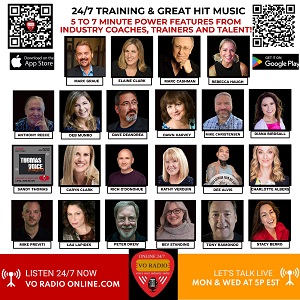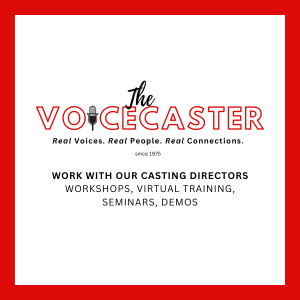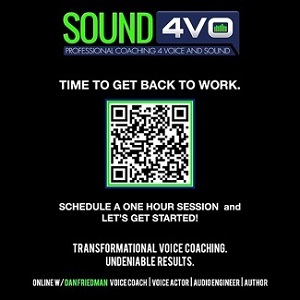|
VOICE ACTING Do Consumers Care If Voice Talent Is Male Or Female? What's Changing & What's Not ... July 10, 2018  By Kim Handysides By Kim HandysidesVoice Actor To the average Jane or Joe, voice overs are ubiquitous. We hear them
on the radio, on TV and in movies. We hear them in ads on YouTube or
Spotify. Yet, how many of us stop to think about whether the voice
artist is a man or a woman and whether it matters to us as consumers? Sometimes gender matters a lot, and sometimes it doesn't.
It all depends on what you are trying to say.
MEN STARTED IT Traditionally, voice artists were men.
By
the mid century, the need for voice actors increased, not only for
cartoons and radio but also advertisements and movie trailers. One of
the most well known voices among voice artists is Don LaFontaine. He
voiced hundreds of thousands of promos and commercials over the course
of his career. He set the standard for how movie trailers were edited
and voiced. These men played huge parts in the development of voice-over
as an art. In other words, historically speaking, voice artists were
men. WOMEN VO PIONEERS Now you might be wondering, where do women fit into this? In a nutshell, at a rate that does not reflect their actual
percentage in society. To enhance story, a smattering of women actors
found their way behind microphones in the ad world, and June Foray
will forever be lauded as the first woman of animation voice-over. In
the '80s, when I worked in broadcasting, the staff ratio of men to
women on air was 6:1 in the DJ and voice-over world, and 5:1 among news and talk
show hosts. The tradition of seeking male over female voice artists is
still alive and well. However, a recent industry trend report showed a 24%
increase in demands for female voice artists while demands for male
artists has only increased by 16%. While this report only outlined voice
seeking, not hiring behaviors, it seems as if people are becoming more
interested in female voice artists than they were before.
Online casting sites and casting directors for all forms of voice-over
currently see a 2:1 ratio of hiring male over female voices. This is
certainly an improvement toward a more equitable ratio than 50 or
even 20 years ago. CASTING'S MIXED MESSAGE But what we hear around us still does not reflect
the reality in front of us. For instance, the animated series Bob's Burgers,
with over 80% scores on both IMDb and Rotten Tomatoes, presents a
cartoon character cast of three female leads to two male. However, the actual
gender of the actors who portray them is 1 female and 4 males. This
mixed message is passive aggressive and more destructive than
positive in the search for gender balance in voice-over. The show
presents the validating veneer of gender equity on the outside, but does
so from the position of a pocketbook slap to voice actors, and a
confusing ethic to audiences. WHERE FEMALE VO IS GROWING In advertising,
studies over the past couple of decades continue to reveal a preference
for the male voice in a persuasive ad such as automotive or appliance
retail. Yet these studies reveal that the female voice continues to evoke our trust. Female
vocals have gained ground in beauty and health and have infiltrated the
sound of financial institution advertisements. Of course, the
advertising world is constantly looking for ways to mix it up, to get
our attention and influence our behavior. Lately, for example, women's
voices have made an upsurge in car retail, especially on a national
level. Female voices in the lower range, i.e. lower pitch voices, tend
to be perceived as powerful, and so are the best to gain access to
traditional male domain roles. Medium or high pitched male voices, by
contrast, are perceived as being non-threatening -therefore more capable
of earning our trust. The guy or girl next door are seen as allies.
ENTER 'ANDROGYNOUS' VOICE Interestingly, 2017 saw a number of requests in voice-over spec
sheets for an androgynous voice. There are a number of factors that
could be playing into this:
Either way, it's giving voice to a
community who has been struggling to be heard. Many artists such as
Elton John and Lady Gaga have made music that play with themes of
sexuality and gender. Today's trends bring this theme into voice-overs
and voice artists. ----------------- ABOUT KIM Kim Handysides is a top voice-over artist in commercials, eLearning and narration. She loves dogs, mountains, beaches and story. With a background in theatre and film and a thorough grounding in radio and television, she works a lot and loves sharing advice, tips and experience with anyone who asks. Email: KimHandysides@gmail.com Web: www.KimHandysides.com CLICK HERE FOR MORE HELPFUL VOICE ACTING ARTICLES |
|
|
Tell Us What YOU Think!
Please Note: Since we check for spam, there will be a slight delay in the actual posting of your comment.
Comments (2)
Rick Lance
7/10/2018 at 12:03 PM
Kim has made some interesting points here. At the same time, the trends are as hard to predict as American culture currently is. One thing's for sure... guess I have to watch out for those "deeper" voiced female talents! Hee, hee... But personally, I enjoy those voices best. Glad to see more female VO overall in industry.
James Conlan
7/10/2018 at 11:18 AM
I appreciate this update and strongly support the idea of gender equality in all professions, including voiceover. My female students will appreciate this information.









.png)
click for new article alerts